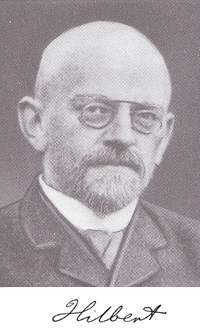
The original address Mathematische Probleme appeared in Göttinger Nachrichten, 1900, and in Archiv der Mathematik und Physik, 1901. The French translation by M. L. Laugel Sur les problèmes futurs des mathématiques appeared in Compte Rendu du Deuxième Congrès International des Mathématiciens, Gauthier-Villars, Paris, 1902.
Mary Winston Newson translated Hilbert's address into English for Bulletin of the American Mathematical Society, 1902. A reprint of which appeared in Mathematical Developments Arising from Hilbert Problems, edited by Felix E. Browder, American Mathematical Society, 1976. There is also a collection on Hilbert's Problems, edited by P. S. Alexandrov, 1969, in Russian, which has been translated into German.
Further Reading:
Ivor Grattan-Guinness: A Sideways Look at
Hilbert's Twenty-three Problems of 1900 (pdf file), Notices of the AMS, 47,
2000.
Jeremy J.Gray: We must know, we shall know; a
History of the Hilbert Problems, European Math. Soc.: Newsletter 36, and Oxford Univ. Press, 2000.
David Joyce, Clark University, produced a list of Hilbert's problems and a web version of Hilbert's 1900 address in March 1997.